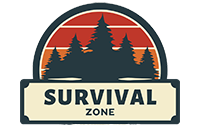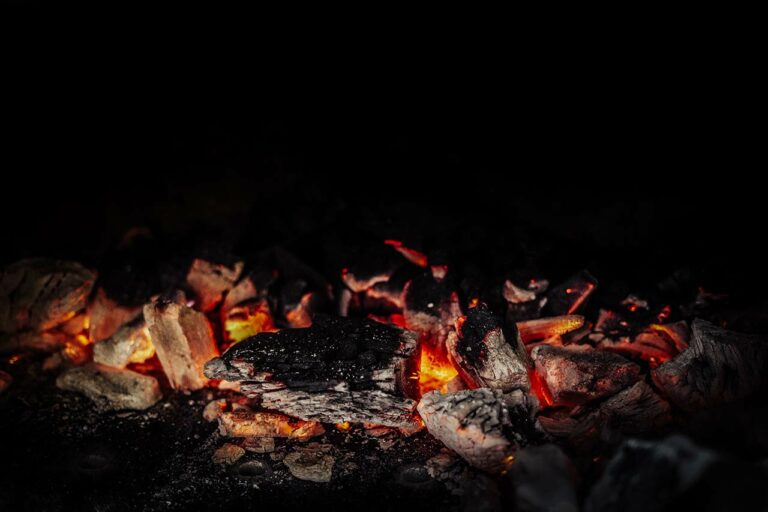How To Survive In The Mountains (Emergency Tips)
Venturing into the mountains can be challenging and dangerous if you’re not prepared. Knowing how to survive in the mountains is crucial to ensure both an enjoyable and safe adventure.
Mountain survival involves a variety of skills, ranging from navigating the unpredictable terrain to finding shelter and sustenance in harsh conditions. Before venturing out, it’s essential to familiarize yourself with the potential dangers and challenges you may face, such as extreme weather, lack of resources, and encounters with wildlife.
Planning Your Mountain Excursion
Choosing the Right Time
When planning a mountain adventure, it’s crucial to choose the right time of year to go. Weather plays a significant role in the success of your trip, and choosing the right time can greatly affect your chances of survival in mountainous terrain. Make sure to check the weather forecast before setting out and aim for a time when conditions are most favorable. Avoid going during the rainy season or when heavy snow is expected.
Knowing the Area
Familiarizing yourself with the area is essential for a successful mountain excursion. Obtain a detailed map of the region, study the terrain, and take note of any prominent landmarks. Pay attention to natural features like valleys and mountain ranges, as well as man-made structures that may serve as reference points during your trip. As a rule, stick to established trails and avoid venturing off into unknown territory. If possible, consult with local experts or guides to get inside information on the area.
Route Planning
Once you’ve chosen the right time and studied the area, it’s time to plan your route. Your route should take into consideration the following factors:
- Weather: Plan your route around the weather forecast, and have a backup plan in case of unexpected changes in conditions.
- Terrain: Select a path that matches your skill level and is suitable for the type of adventure you’re seeking. Steeper, more challenging terrain may require specialized gear and skills.
- Time: Ensure you have enough time to complete your planned route, taking into account the daylight hours and your pace.
- Landmarks: Choose a route that follows recognizable landmarks so you can easily track your progress.
Here’s a simple example of a route plan:
| Step | Action | Landmark | Estimated Time |
|---|---|---|---|
| 1 | Start at trailhead | Parking area | 0:00 |
| 2 | Follow trail to valley | Large boulder | 1:00 |
| 3 | Cross valley and ascend peak | Mountain ridge | 2:00 |
| 4 | Descend peak and return | Trail intersection | 3:30 |
Essential Clothing and Equipment
Attire for Different Weathers
When you’re in the mountains, dressing in layers is crucial for regulating your body temperature. Start with moisture-wicking base layers made of synthetic materials or wool. Avoid cotton clothing as it retains moisture and can cause hypothermia when wet.
For the middle layer, wear an insulating material, such as fleece or down, to retain warmth. On top, use a waterproof and breathable outer layer, like a hardshell or softshell jacket and pants, to protect you from the elements.
Don’t forget to keep your extremities covered with warm socks, gloves, and a hat.
Mountain Climbing Gear
Proper gear is essential for a safe and enjoyable mountain climbing experience. Here are some important items you should have:
- Boots: Choose sturdy, crampon-compatible boots that provide ankle support and is waterproof.
- Crampons and Ice Axe: These tools are necessary for traversing icy and snowy terrain.
- Compass (with declination adjustment): A reliable method to navigate in the mountains.
- Sunglasses: Protect your eyes from UV radiation and glare, especially at higher elevations.
- Avalanche Beacon: This is a lifesaving device that helps locate you in the event of an avalanche.
In addition to these essential items, consider packing extra clothing, a first aid kit, and appropriate food and water supplies.
Food and Water Necessities
Nutrition for Mountain Survival
When you’re surviving in the mountains, food is essential not only for your energy but also to maintain a healthy body temperature. Try to focus on high-energy, nutrient-dense food items such as:
- Protein: Carry dried meat, like jerky or salami, or protein bars.
- Carbohydrates: Choose granola bars, trail mix, or dried fruits.
- Fats: Don’t forget nuts and seeds, nut butter, or energy bars.
As you prioritize these types of foods, remember that your calorie intake should match the physical demands of your mountain environment. Maintaining a balanced diet will help your body to function efficiently and stay warm in cold conditions.
Hydrating in the Mountain Environment
Staying properly hydrated is crucial when surviving in the mountains. Dehydration will not only reduce your physical stamina, but it can also impair your decision-making ability. To ensure you have enough drinking water at all times:
- Find water sources: Keep an eye out for natural sources of fresh water. Look for streams, rivers, and snowmelt. Be cautious of stagnant water sources, as they have a higher likelihood of containing harmful bacteria.
- Water treatment: Always carry a water filter or purification tablets with you, as it’s crucial to treat water from natural sources before consuming it. Waterborne pathogens can wreak havoc on your digestive system.
- Snow and ice melting: In colder environments, you might need to resort to melting snow or ice. Opt for the cleanest sources and avoid consuming melted snow that’s discolored, it may contain contaminants and microorganisms.
Mountain Navigation Skills
Using a Map and Compass
Navigating the mountainous terrain, you’ll find that a topographic map and baseplate compass are your best friends. It’s essential to know how to use them to find your way through the mountains. Here’s a quick guide to get you started:
- Orient the map: Lay your map flat on a surface or the ground. Line up the compass’ edge along the map’s north-south lines.
- Rotate the compass housing: Rotate the compass housing so the orienting arrow points to ‘N’ for north.
- Find your bearings: Pick a landmark on ground and find its direction on the map. Align the compass’s edge to that direction, rotate the housing until the orienting arrow points to ‘N’, and read the bearing where the index line meets the housing.
Remember, GPS or smartphone apps can be great supplemental tools, but never rely solely on them as they can fail in harsh weather conditions.
Recognizing Natural Landmarks
In addition to using a map and compass, knowing how to recognize natural landmarks helps you navigate in the mountains more effectively. Be on the lookout for these common mountain features:
- Creeks and valleys: Use creeks as a natural guide, as they often follow the path of valleys. Valleys can also serve as a funnel for bad weather, though, so stay alert.
- Ridges: Following a ridge can be a reliable way to maintain direction and stay on high ground. Be cautious of false ridges, which can lead uphill only to descend again.
- Visible peaks: Use the peaks of surrounding mountains as reference points, but always be aware of the possibility of multiple peaks from one mountain.
Setting Up Shelter
When surviving in the mountains, setting up a proper shelter is crucial.
Shelter Construction
There are several types of shelters you can construct in the mountains, depending on available resources and time. Here’s a list of common shelters you can use:
- Tents: If you’re carrying a tent, this is your go-to option. Tents provide complete coverage and can be set up quickly. Just make sure you have a cold weather-rated tent with a sturdy frame to withstand high winds.
- Tarp shelters: With a tarp, rope, and a few trees, you can create a simple yet effective shelter. Tarps are lightweight and versatile, but remember to secure them properly against gusts of wind.
- Lean-to: Constructing a lean-to involves stacking timber or branches against a horizontal support, like a tree or rock. They’re relatively simple to build but may not offer complete protection from the elements.
- Snow caves: Ideal for snowy mountain conditions, snow caves require time and effort to construct but provide good insulation to keep you warm.
- Bivy shelters: A bivy is a waterproof, lightweight shelter that can be used in emergency situations. It’s minimalistic and compact, making it a good option for an unplanned overnight stay in harsh conditions.
Choosing a Suitable Location
When setting up your shelter in the mountains, consider the following factors for choosing an ideal location:
- Wind protection: Look for natural windbreaks, like rocks, trees, or hills. This will help in reducing the windchill factor and keep your shelter stable.
- Water access: While being near a water source is important, make certain your shelter is above the flood line to prevent issues during heavy rainfall or melting snow.
- Terrain: Choose flat, solid ground to avoid instability or discomfort when sleeping. Avoid rocky and slope areas that may cause your shelter to collapse or slide.
- Visibility: If you want to be found, make sure your shelter is visible from a distance. However, if you prefer to keep a low profile, consider remaining hidden among trees or rocks.
Dealing with Mountain Weather
Mountain weather can be unpredictable and change rapidly. One moment it may be sunny and clear, and the next it can turn foggy, rainy, or even snowy. Temperature variations are common, causing you to constantly adjust your gear and clothing. It’s crucial to be aware of the potential weather conditions before you head out.
Aside from the standard weather forecast, take a look at specialized mountain weather services that provide more detailed information about mountain-specific conditions, such as altitude and localized weather patterns. This will help you make informed decisions about what to expect and how best to prepare for the challenges ahead.
Preparing for Changing Weather
When facing mountain weather, it’s essential to be prepared. Here are a few tips to help you get ready:
- Layer up: Dress in layers, so you can easily add or remove clothing as temperatures change. Start with moisture-wicking base layers, add insulating layers like fleece or down, and finish with a waterproof, breathable outer layer to protect against rain and snow.
- Pack wisely: Bring gear that’s suitable for the range of potential weather conditions. This includes a waterproof jacket, extra warm clothing, gloves, a hat, and sunglasses to protect against sun and wind.
- Stay dry: Carry waterproof covers for your backpack and any other essential gear. Wet equipment can weigh you down and make you feel colder.
- Know the signs: Learn how to recognize signs of changing weather, such as cloud formations, wind patterns, and changes in temperature. This awareness will help you take appropriate action if the weather takes a turn for the worse.
Fire Building Skills
Starting a Fire
When you find yourself in the mountains, knowing how to start a fire is crucial for your survival. Start by gathering dry timber and small branches from trees. If they’re damp from rain or snow, try to find some that’s sheltered or use your ax to split the wood and expose the drier insides.
Use a firestarter such as a lighter, matches, or a firesteel to ignite your tinder – small, highly flammable materials such as dry leaves, grass, or bark. Place kindling (small branches or twigs) on top of the tinder, gradually adding larger pieces of wood as the fire grows.
Remember:
- Choose a safe location, away from overhanging branches or dry vegetation.
- Create a fire pit by digging a shallow hole and surrounding it with rocks to contain the fire.
Maintaining a Fire
Maintaining your campfire requires consistent attention. To keep it burning, follow these tips:
- Fuel: Regularly add dry wood to the fire, but avoid smothering it. Thicker logs will burn slower, allowing you to conserve your initial stock of timber.
- Airflow: Good airflow is essential for a fire to burn efficiently. Position the logs with some gaps for air to circulate. You can also gently fan the flames to encourage growth.
- Safety: Don’t let the fire get too big or out of control. Keep a bucket of water or some dirt nearby, in case you need to quickly put out any flames.
- Temperature management: In cold conditions, don’t forget to keep your back warm. You may need to switch your body position regularly to ensure overall warmth.
Dealing with Mountain Dangers
Avalanche Danger Awareness
Avalanches are a real danger in the mountains. Before you head out, make sure you’re aware of the avalanche risk in the area. Check the local avalanche forecast and pay attention to the terrain. Steep slopes, recent snowfall, or wind-loading can increase the risk.
When traveling in avalanche-prone areas, make sure to carry the proper safety gear such as an avalanche beacon, probe, and shovel. Know how to use them and practice with your companions. Spread out while crossing risky slopes to minimize the risk of triggering an avalanche and burying your whole group. Avoid crossing terrain traps like gullies and bowls.
Wildlife Safety Measures
The mountains are home to various wildlife, including wolves, grizzlies, and mountain lions. Maintain a safe distance from wild animals, and never approach or feed them. Here are some tips to avoid unwanted encounters:
- Make noise while moving, especially in areas with limited visibility.
- Travel in groups, as animals are less likely to approach larger parties.
- Keep food and trash stored safely, away from sleeping areas.
- Carry pepper spray or bear spray to deter aggressive animals in an emergency.
Altitude Sickness and Hypothermia
Mountains pose unique health risks such as altitude sickness and hypothermia. When ascending, give your body time to acclimate by gradually increasing elevation and staying hydrated. Symptoms of altitude sickness include headache, nausea, dizziness, and shortness of breath. If you experience any of these symptoms, don’t ignore them. Either stop your ascent or, if severe, descend to a lower elevation.
Hypothermia occurs when your body loses heat faster than it can produce, resulting in dangerously low body temperatures. Layer your clothing to regulate body heat, and remove layers when you start to sweat to stay dry. Keep your head, hands, and feet well-insulated, as they’re more susceptible to frostbite. Familiarize yourself with the signs of hypothermia, such as shivering, confusion, and drowsiness. If you or someone in your group starts showing symptoms, take immediate action like getting them into dry clothes, sharing body heat, or seeking shelter.
Emergency Situations and First Aid
Providing Basic First Aid
Injuries and accidents are a real possibility, and it’s essential to know how to respond effectively. Here are some first aid tips to consider when dealing with common mountain emergencies:
- Airway, Breathing, and Circulation (ABCs): Always check for any issues with a person’s airway, breathing, and circulation as soon as possible. Fix these problems immediately before treating anything else.
- Cuts, Scrapes, and Bleeding: Clean the wound and cover it with a bandage or gauze. Apply pressure to help slow down bleeding. An emergency blanket can be used as a makeshift bandage in a pinch.
- Fractures and Sprains: Immobilize the injured area using a splint or anything rigid available, like a stick. Support the injured limb to reduce movement and swelling.
- Hypothermia: If someone starts to shiver uncontrollably or feels exhausted, they might be experiencing hypothermia. Use an emergency blanket to help them retain body heat and provide additional clothing or layers.
Sending a Rescue Signal
When you’re lost or injured in the mountains, it’s crucial to signal for help. A whistle can be particularly useful in these situations, so make sure to pack one in your emergency kit. Here are some helpful ways to send a rescue signal:
- Whistle Blasts: Whistle three sharp, loud blasts in a row, every minute. This signal can carry further than your voice and won’t strain your vocal cords.
- Premade Signal Tools: Pack a mirror, flare, or brightly colored flag in your emergency kit to use for signaling.
- Stay Put: When you’re in a potentially dangerous situation, the best course of action is usually to stay where you are. This makes it easier for rescuers to find you and saves your energy for other essential tasks.




